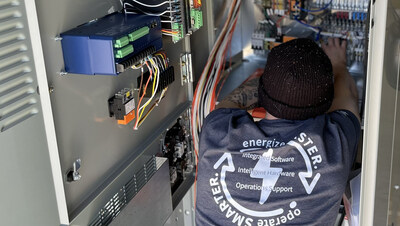|
14.02.2023 21:33:00
|
Aderis Energy Championing Solutions for Regional Northeast U.S. Utility Require-ments Ahead of RE+ Northeast
Brief: Regionally specific utility requirements for interconnections of behind the meter projects over 1MW create technical challenges for developers. Leveraging decades of renewables interconnection experience, with over 1.5 GW of deployed energy assets coast-to-coast, Aderis Energy has developed and successfully deployed solutions in these regions to accelerate the deployment of renewable energy resources in the NE.
CORNELIUS, N.C., Feb. 14, 2023 /PRNewswire/ -- RE+ Northeast is coming to Boston in a few short days, and many exasperated attendees- energy asset owners and developers in the NE- are often surprised to learn that distribution level protection relaying and redundancy requirements are being required for behind the meter (BtM) projects. BtM projects have historically been free of interconnection requirements of this nature because of their small generation size, and the capabilities of existing utility infrastructure designed to protect the grid and the utility's other customers. As individual BtM project sizes have increased and the quantity of these projects achieves deep grid penetration, the concerns over power quality and reliability have come to the forefront of utility operator concerns.
IPR: What is it, and why your utility may require it?
Intertie Protection Relay (IPR) is the term some NE utilities are using to describe protection requirements that provide grid operators with both increased visibility of renewable generation capability as well as the ability to safely turn those independently owned generators off in the case of a localized fault or grid wide maintenance activities that require de-energization for public and worker safety.
IPR brings protection relaying, a form of high-speed fault analysis, to BtM projects that surpasses the functionality of traditional thermal-magnetic circuit breakers. When a protection relay is used in conjunction with a circuit breaker, the total protection capabilities are more similar to what utilities would use of larger medium voltage (MV) generators and sub-stations.
The addition of IPR to BtM projects requires additional engineering, equipment, and installation considerations that can become quite expensive if not implemented properly.
To de-risk these IPR requirements, Aderis Energy has transferred its years of interconnection protection knowledge into a standard IPR offering that can be adapted to support several known utility requirements easily and affordably.
IPR is only one example.
The ability for renewables to be easily deployed almost anywhere causes other utility challenges due to the grid's infrastructure being designed for uni-direction delivery of electricity for load customers and is not always capable of managing the delivery of electricity from a distributed resource.
In these instances, interconnection challenges including inrush current, rapid voltage change, zero-export and limited export control, automatic voltage regulation, and utility curtailment based on dynamic load conditions are migrating into requirements for smaller generators.
Aderis Energy offers customers a full suite of standardized and proven solutions to address all these barriers and more, enabling the rapid and affordable deployment of renewables everywhere.
From the Aderis team attending RE+ Northeast in Boston it will be CEO, Adam Foodman, and Technical Sales Executive, Colton Ward.
![]() View original content to download multimedia:https://www.prnewswire.com/news-releases/aderis-energy-championing-solutions-for-regional-northeast-us-utility-require-ments-ahead-of-re-northeast-301746810.html
View original content to download multimedia:https://www.prnewswire.com/news-releases/aderis-energy-championing-solutions-for-regional-northeast-us-utility-require-ments-ahead-of-re-northeast-301746810.html
SOURCE Aderis Energy, LLC
 Der finanzen.at Ratgeber für Aktien!
Der finanzen.at Ratgeber für Aktien!
Wenn Sie mehr über das Thema Aktien erfahren wollen, finden Sie in unserem Ratgeber viele interessante Artikel dazu!
Jetzt informieren!

